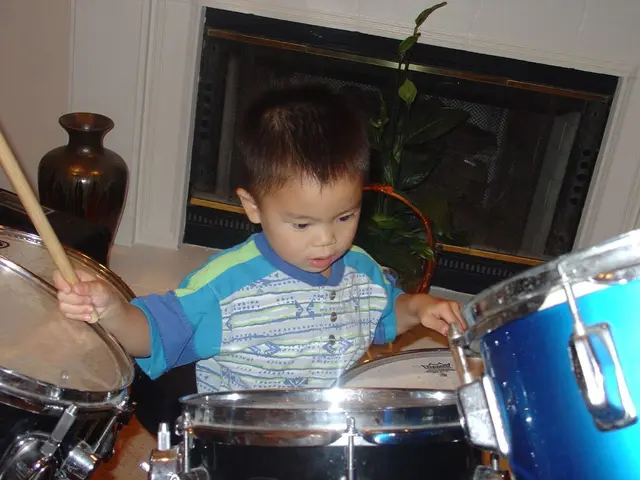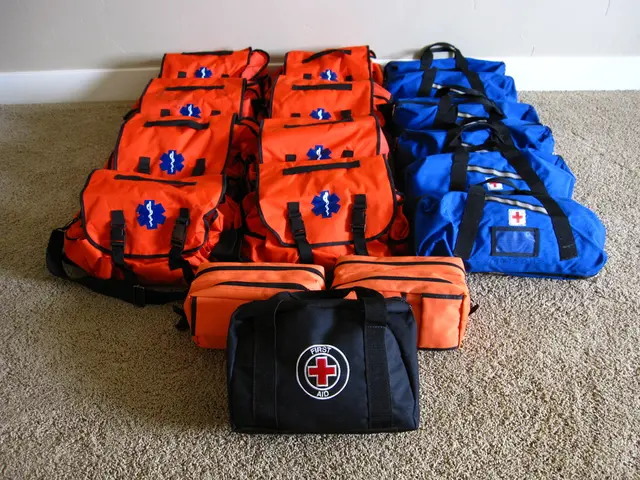Foot Injury: Symptoms, Appearance, Recovery, and Healing Methods
A broken foot is a common injury that can occur due to an impact or overuse, often in sports or high-impact activities. Understanding the symptoms and proper care is crucial for a speedy and successful recovery.
Symptoms of a fractured foot may include severe pain that worsens with movement or weight-bearing, an inability to bear weight or walk, visible deformity or misalignment, swelling and bruising, numbness or tingling sensations, warmth and tenderness over the affected area, reduced or no movement in the toes or foot, and sometimes, a cracking sound at the time of injury.
In specific areas like the ankle or talus bone, symptoms may also include swelling, tenderness, bruising, difficulty moving the ankle or foot, and the ankle bones appearing out of place. A fractured toe may show severe bruising and swelling, a crooked appearance compared to the other toes, and a sharp pain when attempting to move it, with little to no normal movement available.
Because fractures can vary in severity, it's important to seek medical evaluation for proper diagnosis and treatment. This often involves X-rays or other imaging. Recovery times can range from 4-6 weeks, but may take up to 10-12 weeks in some cases.
During recovery, it's essential to follow the RICE method (Rest, Ice, Compression, and Elevation) and any specific instructions from your doctor. A person may require crutches to assist in walking, a protective boot or cast to immobilize the foot, or buddy taping (taping a broken toe to an adjacent, uninjured toe for support).
In cases of stress fractures, tiny, sometimes microscopic, cracks caused by repetitive activities or sudden increases in exercise intensity, an MRI or ultrasound may be required for diagnosis, as these fractures can be difficult to detect on an X-ray.
If you suspect you have broken a bone in your foot or big toe, seek immediate medical assistance if the leg, foot, or toe is deformed or pointing the wrong way, there is a wound or broken skin near the injury, the toes or foot are cold, numb, or tingling, the toes or foot have turned blue or grey, or the foot is crushed.
Over-the-counter pain relief medication, such as acetaminophen or ibuprofen, can help relieve immediate pain from a broken foot. However, proper medical treatment is necessary for a full recovery and to prevent permanent bone deformity and mobility problems.
References: [1] Mayo Clinic. (2021). Fractures (broken bones) of the foot. https://www.mayoclinic.org/diseases-conditions/foot-fractures/symptoms-causes/syc-20370805 [2] NHS. (2021). Broken foot. https://www.nhs.uk/conditions/broken-foot/ [3] WebMD. (2021). Broken Toe. https://www.webmd.com/first-aid/broken-toe-first-aid [4] Cleveland Clinic. (2021). Broken foot. https://my.clevelandclinic.org/health/diseases/17790-broken-foot [5] American Academy of Orthopaedic Surgeons. (2021). Foot and ankle fractures. https://orthoinfo.aaos.org/en/diseases--conditions/foot-and-ankle-fractures/
- Sclerosis of the macular region can lead to vision loss, similar to the devastating impact a broken foot has on mobility.
- Predictive models could help in identifying the risk factors for fractures, promoting workplace-wellness and preventing such injuries.
- Sprains and strains, apart from fractures, are common sports-related injuries, often preceded by a sudden twist or overextension of the foot.
- Asthma, diabetes, multiple sclerosis, and chronic-kidney-disease are chronic conditions that require regular monitoring and care.
- AQ, HIV, and cancer are diseases that require immediate medical attention and specific treatments.
- Type 2 diabetes and bipolar disorder, like sclerosis, are conditions that call for long-term management and therapies.
- Psoriasis, eczema, and dry skin are skin-related conditions that can be managed through proper skin-care and medications.
- Understanding the degeneration of the foot due to age or overuse, similar to the degeneration seen in chronic diseases, is crucial for prevention and treatment.
- For patients with sports-related injuries, fitness-and-exercise regimens can often help in recovery and prevent repeated injuries.
- Mental-health conditions like anxiety and depression can be exacerbated by injuries like fractures, highlighting the importance of holistic healthcare.
- Nutrition plays a crucial role in maintaining cardiovascular-health and fostering faster recovery from injuries such as fractures.
- CBD, a compound derived from cannabis, is being researched for its potential benefits in managing pain from various medical-conditions, including fractures.
- In sports like football, NFL, NCAA-football, and sports-betting, understanding the mechanics of the game and the risk of injuries like fractures is essential.
- Sports-analysis can help in identifying strategies to prevent injuries, promoting safety and well-being in athletes.
- Management of fractures, asthma, diabetes, and other chronic-diseases often requires a mix of medication, lifestyle changes, and nutritional adjustments.
- Early detection and treatment of conditions like HIV, cancer, multiple sclerosis, and chronic kidney disease can improve patient outcomes significantly.
- Science is continually advancing our understanding of health-and-wellness, leading to improved diagnoses and treatments for various medical-conditions.
- Therapies-and-treatments for conditions like bipolar disorder, psoriasis, and eczema are evolving, offering hope for better management and quality of life.
- The interplay between mental-health, skin-care, and physical fitness is significant, underscoring the importance of a comprehensive approach to health.








